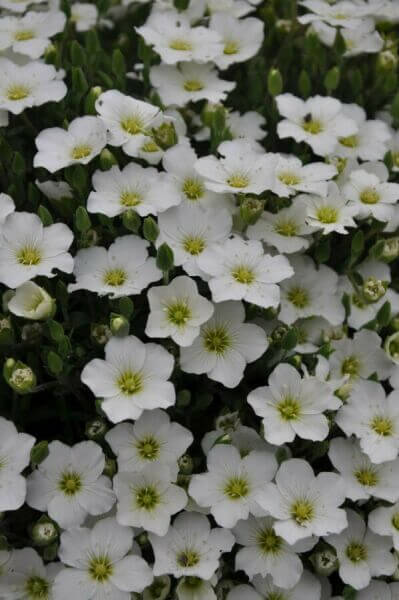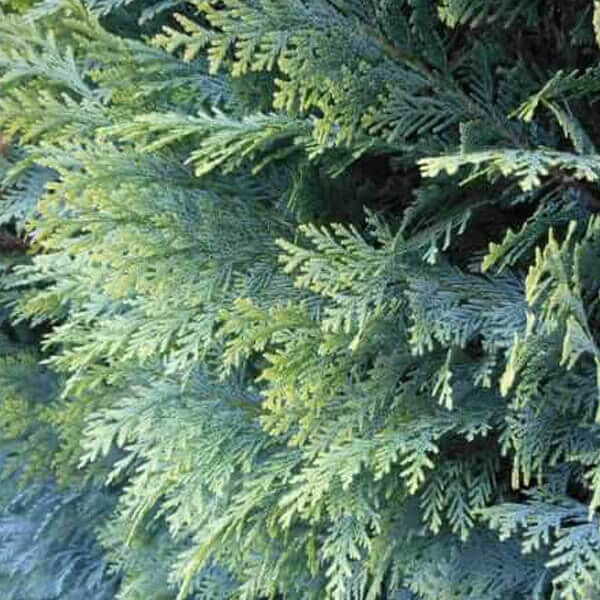Best Hedge Plants For Mixed Borders
Enhance your garden's allure with lavish hedge varieties such as Yew (Taxus), Thuja, Laurel, Photinia, and Bamboo, commemorated for their structural stability and ecological advantages.
Yew and Thuja provide evergreen protection and winter strength, while Laurel offers fast development and broad, fragrant leaves.
Photinia includes seasonal charm with its dynamic red foliage, and Bamboo provides a low-maintenance, tranquil ambiance.
These hedges enhance air quality, lower sound, and create tranquil, personal areas.
Proper planting, spacing, and upkeep make sure energetic growth and environmental consistency.
Check out how these lush varieties can raise your garden's appeal and wellness.
Key Takeaways
Transform Your Garden With Lush Hedge Ranges
- Select Yew for its dense, evergreen development and unequaled longevity.
- Choose Laurel for its fast development and broad leaves, making sure fast personal privacy.
- Choose Photinia for its dynamic seasonal foliage, which turns a striking dark red.
- Make use of Bamboo for a low-maintenance, winter-hardy hedge with aesthetic appeal.
- Space plants 2-3 per meter and prune regularly for ideal growth and health.
Popular Hedge Plants
When transforming a garden with rich hedge ranges, it's necessary to consider popular hedge plants such as Yew, Thuja, Laurel, and Photinia due to their distinct qualities and benefits.
Yew (Taxus) is highly esteemed for its longevity and dense, green growth, making it a prime choice for enduring landscapes.
Thuja is noted for its evergreen foliage and robust winter resilience.
Photinia adds seasonal vibrancy with red leaves that darken over time, creating dynamic visual appeal.
Laurel uses quick development and aromatic, broad leaves, suitable for fast personal privacy.
Furthermore, Bamboo is an exceptional option for ambiance, offering a low-maintenance, winter-hardy option that enhances the garden's visual with its sophisticated, swaying walking sticks.
These selections cater to a range of horticultural requirements and preferences.
Benefits of Garden Hedges
Garden hedges offer a multitude of advantages, making them a valuable addition to any landscape. These natural barriers are cost-efficient to execute and supply substantial wind defense, boosting air circulation and contributing to noise reduction. The dense foliage of hedges like Thuja and Beech makes sure personal privacy by blocking presence, producing a serene and remote environment.
Hedges likewise play an essential function in microclimate policy, providing a steady environment that fosters plant development and reduces temperature changes. Their intricate leaf structures filter toxins, improving air quality and adding to a healthier garden environment.
Furthermore, hedges master sound decrease, soaking up and deflecting acoustic waves to lower ambient sound levels. This double functionality of supplying both acoustic and visual privacy improves the total tranquility and aesthetic appeal of any garden.
Planting and Upkeep Tips
For an effective hedge, meticulous preparation of the planting area is vital. Make sure the soil has correct pH and drain to support strong root development.
Area the plants appropriately for the picked species. Water the hedge often throughout its preliminary development phase, adjusting as needed with seasonal changes.
Carry out a systematic pest control and disease prevention technique, utilizing chemical or natural treatments when necessary. Routinely examine for aphids, termites, and fungal infections.
Apply mulch to keep moisture and reduce weeds. Seasonal pruning promotes thick growth and air flow, vital for plant health.
Following these guidelines will assist you cultivate a lively, well-maintained hedge that boosts the appeal of your garden.
Spacing and Cutting Guidelines
Spacing and Trimming Standards
Correct spacing and trimming are crucial for cultivating healthy, aesthetically appealing hedges. Appropriate spacing guarantees each plant gets sufficient nutrients, light, and air flow.
Follow these guidelines for optimal hedge maintenance:
- Spacing: Position hedge plants 2-3 plants per meter to encourage robust growth.
- Pruning Methods: Routine pruning is essential for maintaining desired hedge height and shape. Trim new growth in summertime and cut down older wood during winter.
- Seasonal Care: Adjust trimming schedules and methods according to seasonal requirements to guarantee plant health.
- Hedge Height: Frequently monitor and cut to maintain the preferred hedge height and accomplish uniform looks.
Complying with these steps will ensure your hedge flourishes, boosting both the appeal and functionality of your garden.
Selecting the Right Hedge
Picking the Right Hedge
Picking the suitable hedge involves examining aspects such as mature height, foliage density, and environmental resilience. Successful hedge plant choice requires understanding each types' growth attributes and site-specific versatility.
For instance, Yew (Taxus) provides exceptional longevity and thick development, Additional info while Thuja is noteworthy for its winter season strength. Additionally, thinking about maintenance requirements is essential; fast-growing species like Laurel or Privet need regular trimming, whereas low-maintenance options like Bamboo or Ivy may be more suitable for those seeking minimal upkeep.
Ecological aspects such as soil type, light schedule, and moisture conditions need to likewise direct the choice process. This mindful technique ensures the picked hedges will thrive, offering both aesthetic and functional advantages to the garden landscape.
Shipment and Planting Guidance
To guarantee your hedge plants thrive, they ought to be provided by specialized carriers and planted quickly upon arrival.
Follow these essential steps for effective planting:
- Soil Preparation: Improve the soil with organic matter to enhance drain and nutrient content.
- Planting Depth: Produce a trench two times the width and equivalent to the depth of the root ball.
- Watering Techniques: Water thoroughly after planting, keeping the soil consistently moist but not filled.
- Mulching: Use a layer of mulch to maintain moisture and suppress weeds.
Client Assistance and Service
Provided the vital function of timely assistance in horticultural pursuits, our customer support team is offered six days a week through telephone, email, and social networks to provide skilled suggestions and promptly resolve any concerns. Their devotion to quick action times ensures client fulfillment by solving questions connected to plant health, optimum planting approaches, and upkeep schedules.

Communication Technique
----------------------
Telephone
Within 48 hours
6 days a week
This comprehensive support group, strengthened by an outstanding 9.3/ 10 consumer ranking, highlights our dedication to enhancing the gardening experience for every customer.
Regularly Asked Concerns
For How Long Does It Consider Hedge Plants to Develop?
Hedge plants typically require one to three years to become fully established, with the exact duration varying by species and growing conditions.
Efficient care during this vital period is vital for robust growth. Consistent watering, vigilant weed control, and appropriate fertilizer application are pivotal in promoting strong root advancement.
For instance, fast-growing types like Laurel may establish more quickly, while slower-growing varieties such as Yew may take longer. Persistent maintenance accelerates the establishment procedure, leading to thick and healthy hedges.
What Are the Best Hedge Plants for Privacy?
The concern of the very best hedge plants for privacy involves evaluating evergreen and deciduous alternatives.
Evergreen hedges like Thuja, Laurel, and Cypress offer year-round coverage, ensuring constant personal privacy.
In contrast, deciduous hedges such as Beech use seasonal personal privacy, shedding leaves in chillier months.
Secret upkeep ideas for privacy hedges consist of regular trimming, fertilizing in spring, and correct spacing-- generally 2 to 3 plants per meter.
Additionally, constant watering and persistent weed elimination are important for promoting healthy, dense development.
Can Hedge Plants Draw In Wildlife to My Garden?
Yes, hedge plants can attract wildlife to your garden by offering important advantages like shelter, food, and nesting websites, consequently improving regional biodiversity. Yew, holly, and laurel are exceptional for bring in birds, while ivy supports a range of bugs.
However, it's important to note that there are some drawbacks, such as increased maintenance to manage bugs and routine upkeep. Carefully choosing and preserving hedge varieties can assist stabilize these benefits and drawbacks, ultimately cultivating a dynamic and sustainable ecosystem in your garden.
Exist Any Flowering Hedge Plants Available?
Yes, there are flowering hedge plants available that can enhance the beauty of your garden.
For instance, Elaeagnus, also referred to as Olive Willow, produces aromatic white flowers in the fall, adding a touch of beauty.
Photinia, another popular choice, showcases dynamic red leaves that mature into an abundant green, producing a dynamic visual impact throughout the seasons.
To ensure these plants prosper, it's important to practice proper pruning strategies and seasonal maintenance, such as cutting new development in the summer and cutting back in the winter season.
These measures will assist keep the health and aesthetic appeal of your blooming hedges.
How Do I Prevent Bugs in My Hedge Plants?
To prevent insects in hedge plants, use natural pest control techniques and keep proper hedge care. Introduce beneficial bugs like ladybugs, which victimize harmful insects, to produce a well balanced ecosystem.
Regularly examine your hedges for indications of problem and quickly eliminate any afflicted parts to avoid the spread. Make sure the health of your hedges by using balanced fertilizers and supplying appropriate water.
Utilize mulching to retain soil moisture and proper spacing to decrease plant stress and promote robust growth. These practices collectively assist in decreasing bug issues and maintaining a healthy hedge.
Conclusion
In essence, choosing the right hedge ranges such as Yew, Thuja, and Laurel can change any garden into a serene sanctuary. These plants supply year-round plant, improve aesthetic appeal, and offer practical advantages like sound reduction and wind security.
Appropriate planting techniques, accurate spacing, constant watering, and seasonal cutting are important for optimal growth.
Reputable delivery services and expert consumer assistance guarantee a seamless experience from purchase to planting, making it easier than ever to elevate your outdoor area.
Garden hedges provide a wide range of advantages, making them an important addition to any landscape. These natural barriers are affordable to implement and supply considerable wind protection, boosting air flow and contributing to sound reduction. The thick foliage of hedges like Thuja and Beech guarantees privacy by blocking visibility, producing a serene and remote environment.

Pruning Strategies: Routine pruning is necessary for keeping preferred hedge height and shape. Trim new development in summer and cut back older wood during winter season.